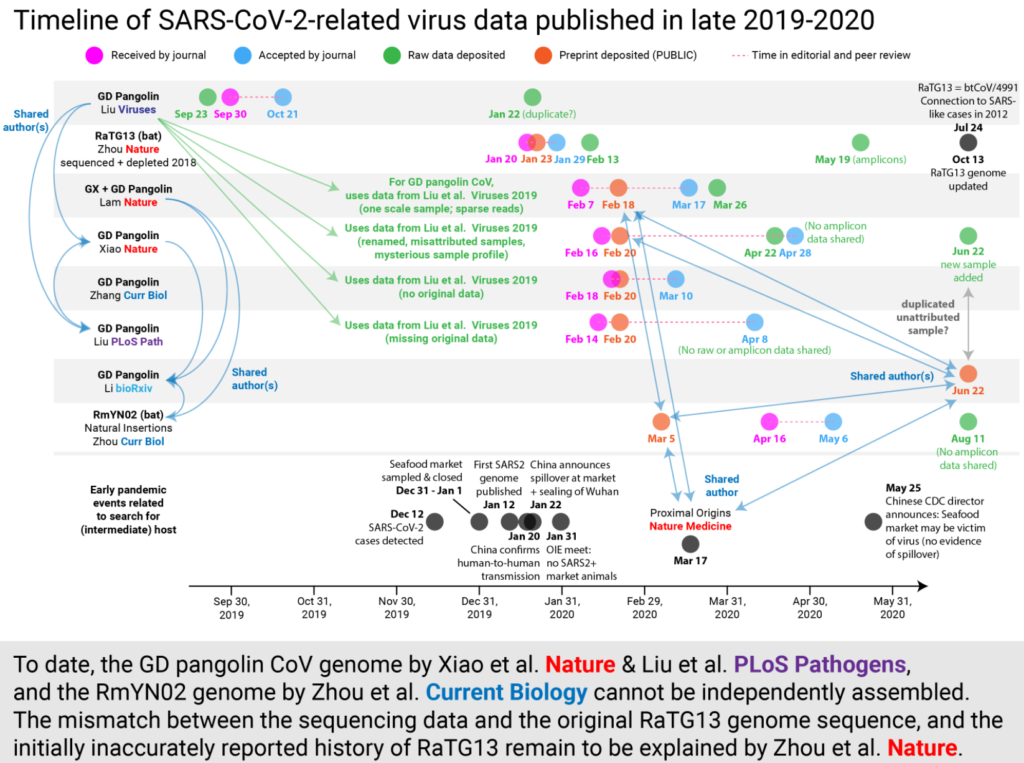Link: https://www.technologyreview.com/2021/06/25/1027140/lab-leak-alina-chan/
Graphic:

Excerpt:
Chan started emailing authors and journals to get the raw data she needed to more fully analyze what they had done. Making such data available is usually a condition of publication, but it can still be hard to obtain. After what she calls months of stonewalling, Chan finally lost her cool and blasted an accusation out from her browser. “I need the scientists + editors who are directly or indirectly covering up severe research integrity issues surrounding some of the key SARS-2-like viruses to stop and think for a bit,” she posted to Twitter. “If your actions obscure SARS2 origins, you’re playing a hand in the death of millions of people.”
Eddie Holmes, a prominent Australian virologist and coauthor of one of those papers (as well as “Proximal Origins”), called the tweet “one of most despicable things I read on the origins issue.” He felt accused, but he wondered what he was being accused of, since his paper had correctly accounted for its pangolin data sources. Holmes then circulated an intricate time line prepared by Chan of the publication dates and past connections between the authors. The chart’s dense web of arrows and connections bore an unmistakable resemblance to an obsessive’s cork board covered with red string and thumbtacks.
Author(s): Antonio Regalado
Publication Date: 25 June 2021
Publication Site: MIT Tech Review